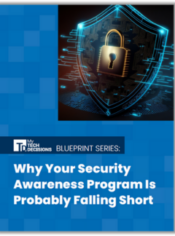As the world grows more and more connected, the amount of valuable data—and the number of cyberattacks on that data—also grows. In early 2016, the University of Central Florida experienced firsthand how sought-after that data can be after hackers gained access to 63,000 Social Security numbers belonging to current and former students and staff. While the breach didn’t include credit card, financial, or medical information, it does serve to highlight how vulnerable the IT infrastructures of institutions of higher education can be, especially in relation to the rising problem of crypto ransomware.
What is Ransomware?
With the explosive growth of the Internet of Things (IoT), the propensity for consumers to store valuable, sentimental, and encrypted information on personal devices has gone through the roof. While this data isn’t always universally valuable, most users would be devastated to lose it; ransomware uses this idea to its malicious advantage.
Unlike traditional types of malware, ransomware doesn’t aim to extract valuable information of any kind. Instead, a ransomware attack aims to lock down a computer, making every bit of essential information stored on the hard drive inaccessible until the hacker’s demands are met. The computer and everything on it is virtually held for ransom, as its name suggests. In an interview with Wall Street Journal, Chris Stangl, Section Chief of the FBI’s Cyber Division, recently described ransomware as a “prevalent, increasing threat” that is expected to worsen as the year goes on.
Back it Up—or Pay the Cost
The reason that ransomware is so devastating is that there’s is nothing anybody can do to disinfect your computer—not an IT staff, not the Geek Squad, and not even the FBI. Short of wiping the hard drive clean or paying the ransom, the user is completely out of luck and their data is inaccessible forever. For this reason alone, many victims will opt to pay the ransom, though this isn’t necessarily encouraged, as cybercriminals have been known to take the ransom money without releasing the infected computer’s files.
These attacks have proven effective. In 2014 and 2015 combined, the FBI reported that cyber-criminals made off with more than $47.8 million—and those were just the incidents that were actually reported. The average cost of a ransom can put an individual out anywhere between $200 to $10,000, along with other damages incurred including loss of productivity, legal fees, etc.
To educate the public on how to thwart cybercriminals, The United States Computer Emergency Readiness Team lists six preventative steps against the threat of ransomware:
- Perform regular backups of all critical information to limit the impact of data or system loss and to help expedite the recovery process. Ideally, this data should be kept on a separate device, and backups should be stored offline.
- Maintain up-to-date anti-virus software.
- Keep your operating system and software up to date with the latest patches.
- Do not follow unsolicited web links in email. (Refer to the Security Tip Avoiding Social Engineering and Phishing Attacks for more information on social engineering attacks)
- Use caution when opening email attachments. (For information on safely handling email at-tachments, see Recognizing and Avoiding Email Scams)
- Follow safe practices when browsing the web. See Good Security Habits and Safeguarding Your Data for additional details.
Why Are Colleges and Universities Particularly at Risk?
Institutions of higher education, in particular, have been affected by ransomware more so than others due to the openness of campus IT infrastructure, according to the Beazley Breach Insights 2016 report. The report also cites students’ usage of social media along with a dearth of controls and firewalls as reasons that campuses are particularly vulnerable to data breaches.
As such, it’s not surprising that targeted attacks such as “spear phishing,” which are emails or social media messages that look like they are from a legitimate friend or coworker, are so effective. Because colleges and universities are connected hubs of unsecured computers, tablets, and cell phones, the higher education sector has seen an increase in breaches due to hacking or malware, up 35 percent in 2015 from 26 percent in 2014.
Colleges and universities aren’t alone in their vulnerabilities, however. Hospitals have increasingly been the targets of ransomware attacks as well, which raises the stakes in this criminal venture. The threat of crippling a hospital’s infrastructure puts the lives of patients on the line, and so failing to pay the ransom could result in the deaths of innocent patients.
What Else Can Higher Education IT Teams Do?
There are a number of additional, specific measures that IT departments in colleges and universities can employ to prevent crypto ransomware and the spread of cybercrime, including installing firewalls and intrusion detection systems, developing an incident response plan, and educating users and faculty. A more comprehensive list can be found here.
It’s worth noting that cybercriminals are like biological viruses themselves. No matter how hard you fight back against them, they will always be adapting, looking for chinks in your armor, and trying new ways to get in. Ultimately, the fight against ransomware comes down to you. Don’t be caught unaware.
If you enjoyed this article and want to receive more valuable industry content like this, click here to sign up for our digital newsletters!










Leave a Reply